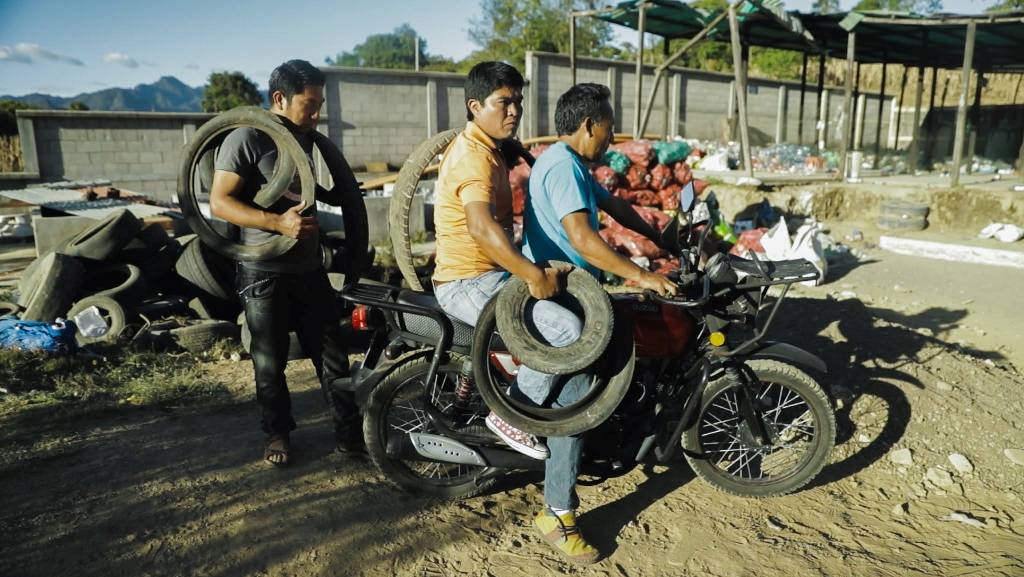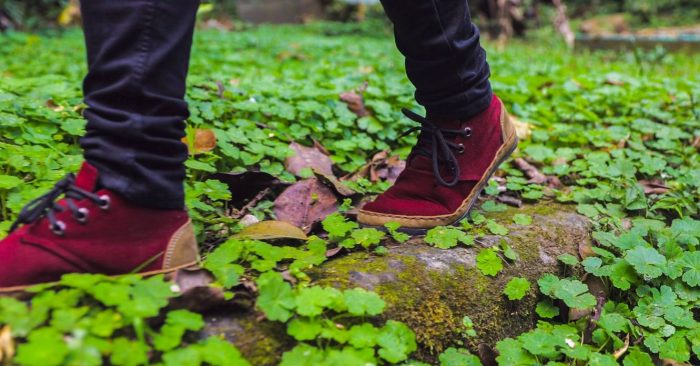Though only 35 years old, I’ve lived the great privilege of growing up in a world very different than the world we live in today.
It was a truly ancient way of living, where everything had a name and a purpose, and if we listened, we could come to know what those were.
Raised by my grandfather, grandmother, and my community in a traditional lifestyle from a very young age, I remain forever grateful. In that world, everything was about relationship and knowledge: how to speak to an elder, what mountains are appropriate to hunt for our food, and how to dress, walk, and speak with dignity and honor.
I was shown how our hands are equally as important as our head and heart, for they give us a way to feel, connect, and work with our life.
In the mornings, I would chop wood so that we had heat, while my grandmother would tend to the land filled with herbs, beans, and strawberries.
My grandfather would do stonework, carpentry, and low-tech engineering with old car tires, and every planter we had was an inside-out car tire, hand-cut and painted by him into a beautiful pattern. He would sometimes make chokecherry wine from our trees in the summer.
Chili, stories, jokes, and jerky were what we would earn. Life wasn’t easy, but it was meaningful and truly handmade.
I long for that respect and meaning, for that connection, that relationship. And I think we all do.
Here, in a world of globalization and exploitation in which poor environmental practices abound, change is not easy. We cannot bring back the past, though we can make a better relationship with the present world and with its future.
Investing in community-based social change is not only doable, but it can also be meaningful. Please take the time so we may walk the talk regarding sustainable change in both footwear and society through upcycling tires, repurposing textiles, and reclaiming our relationship to Mother Earth.
Let’s first touch in on the circumstances and numbers surrounding the shoe industry—to have a better understanding of what exactly we wear on our feet.
The World Footwear Yearbook documents that over 20 billion shoes are produced annually to meet global demands, with most of that production going to consumption in industrialized nations. On top of that, many of the shoes being produced in our world today come from unethical global supply chains of mass manufacturing that leave behind a large carbon footprint, much larger then you might imagine.
To put it into perspective, the average shoe takes three main “steps” in its life span that contribute to waste in our world:
>> Manufacturing: Machinery to make factory-produced footwear is often powered by the cheapest sources of energy—often this is coal. Waste is created through chemically produced leathers and dyed fabrics, plastics, industrial adhesives, and rubber compounds. There is also the transport of materials to the production plant itself from many different sources to take into account.
>> Consumer Use: This includes shipping all across the globe, packaging, and energy use in display and promotion.
>> Disposal: At this step, a disposed-of shoe makes its way to landfills, contributing to contamination of land and waterways through its slow decomposition time.
Amongst these steps. each pair of manufactured shoes, on average, produces 30 pounds of carbon dioxide, amidst other harmful chemicals that are released into the environment.
Here’s the breakdown:
>> Over three million tons of carbon dioxide are produced each year for the 20 billion shoes that are made.
>> The actual manufacturing accounts for roughly 30 percent of the total carbon footprint left by most manufactured shoes.
Most often, the concerns of the manufactured shoe industry revolve around maximized profits, and not so much around our shared environment or the poorly compensated, exploited workers on the other side of this. There is little to no awareness paid to the environmental, emotional, and psychological impact that this process is leaving behind.
Not only is the source of most production in the shoe industry something to remark on, but also the amount of consumption that we participate in. The United States Department of the Interior states that roughly 300 million shoes are thrown away each year. Though, when we start to consider that in terms of nonbiodegradable waste in our landfills and waterways, “away” is hardly the term we should keep using—and that’s just in a single country.
Another large contributor of nonbiodegradable waste in our world that I personally looked at when I started dreaming of ways we could change our approach to the shoe industry were car and truck tires in local landfills. Approximately three billion tires are produced each year to keep up with global demand; and according to the E.P.A., 300 million tires end up in landfills each year because of the difficult process of tire disposal.
Those are big numbers to address, and within them, I think there lies great opportunities for real change.
With awareness and shifting our thinking, I believe that there is an opportunity to transform those big numbers of waste into large quantities of reclamation and quality repurposed goods. Changing the way we live and consume, we can create a powerful solution to a global epidemic and teach a better lifestyle with an emphasis on style—through handmade, locally-sourced, slow fashion.
Each choice we make has power, and we have the ability to change our relationship to the natural world and each other one sustainable, ancestral, equitable, step at a time.
By changing the way we relate to what we wear, where it’s sourced, and those affected by what we do, we can start coming up with real ways of taking away harm and waste from our world. We can allow our ethics to come from a place of indigenous knowledge, woven together with the most relevant and effective modern business practices.

That is what I chose to do, and that is how Xol Original, our nonprofit community-based shoe company, came to life. When I started Xol Original, I wanted to make something special out of what would otherwise harm our earth, and shift it into what can help save it.
While everyone won’t start a nonprofit, or have an eye out for sustainable footwear, there are many ways to pitch in and do your part to transform the big numbers into meaningful victories. Here are some ideas and practices we have come up with over the years:
>> Purchase or produce your own footwear from ethical and sustainable sources, and remember: don’t fall for clever marketing. Discover the source for yourself.
>> Educate yourself and your community about processes of unsustainable and unethical practices which dominate the footwear industry.
>> Live simply. Wear comfortable, handmade shoes that last. In fact, when possible, invest in handmade anything that is built to last and be sure to support the artisans who create them, i.e., nonprofit organizations and local craftspeople.
>> Repurpose your own car and bicycle tires for household planters and art projects.
>> Be a member or active contributor to social causes that fight against exploitation in vulnerable communities.
>> Donate your old shoes to causes who benefit those in need in a sustainable way.
>> Finally, “Walk in a Good Way,” which means to make use of indigenous knowledge on how to live in honor and in respectful relationship with all things.

Let us together revitalize the old ways of reciprocity, so communities—not just companies—may thrive and grow into sustainable commerce and revolutionary ecological hot-spots. And so they may practice and teach eco-justice in its purest form: with no factories, no waste, and no false promises.
We hope you’ll join us in our mission to revamp the commercial shoe industry, support slow fashion, and walk in a good way with confidence, originality, and justice no matter where you are or where you come from.
~
As we launch the first Xol Original Kickstarter campaign we hope to catapult this movement forward to bring awareness and change to the relationship we hold with the natural world, the waste we have created, and with those humble indigenous and non-indigenous people who work tirelessly toward a sustainable future.
~









Read 0 comments and reply